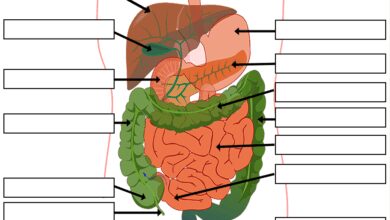System Check 101: The Ultimate 7-Step Power Guide
Ever felt like your computer, phone, or even your daily routine is just… off? A quick system check might be all you need to get things back on track. It’s not magic—it’s methodical.
What Is a System Check and Why It Matters

A system check is a comprehensive evaluation of a device, software, or process to ensure everything is functioning as intended. Whether you’re troubleshooting a slow laptop or verifying the integrity of a server network, performing a system check is the first line of defense against performance issues, security threats, and operational failures.
Defining System Check in Modern Tech
In today’s digital-first world, a system check goes beyond just rebooting your PC. It involves scanning hardware components, validating software configurations, checking network connectivity, and ensuring security protocols are intact. Think of it as a digital health checkup—like an annual physical, but for your tech.
- Hardware diagnostics (CPU, RAM, disk health)
- Software integrity (OS updates, driver versions)
- Network performance (latency, bandwidth, firewall status)
According to PCWorld, regular system checks can reduce downtime by up to 60% in enterprise environments.
Why Every User Needs to Perform Regular System Checks
From casual users to IT professionals, everyone benefits from routine system checks. For individuals, it means faster devices and fewer crashes. For businesses, it translates to improved productivity and reduced IT support costs.
“Prevention is better than cure.” — Desiderius Erasmus. This ancient wisdom applies perfectly to tech maintenance.
Ignoring early warning signs—like slow boot times or unexpected error messages—can lead to catastrophic failures down the line. A simple system check today can prevent data loss tomorrow.
The 7 Essential Components of a Complete System Check
A thorough system check isn’t just about running one diagnostic tool. It’s a multi-layered process that examines every critical component of your system. Below are the seven pillars of a complete system check.
1. Hardware Health Assessment
Your device’s physical components are the foundation of its performance. Over time, hardware can degrade due to heat, wear, or manufacturing defects. A hardware health assessment during a system check includes:
- Checking CPU temperature and usage via tools like HWMonitor or Core Temp
- Testing RAM for errors using MemTest86
- Verifying hard drive or SSD health with CrystalDiskInfo or SMART tools
For example, if your laptop fan is constantly running at high speed, a system check might reveal that your CPU is overheating due to dust buildup or failing thermal paste.
2. Operating System Integrity
The OS is the brain of your device. If it’s compromised or misconfigured, everything else suffers. During a system check, verify:
- Whether your OS is up to date (Windows Update, macOS Software Update, etc.)
- System file integrity using built-in tools like SFC (System File Checker) on Windows
- Boot configuration and startup programs that may be slowing down performance
Running sfc /scannow in Command Prompt is a simple yet powerful step in any Windows system check. It scans for and repairs corrupted system files automatically.
3. Software and Application Audit
How many apps do you really need running in the background? A system check should include a full audit of installed software. Look for:
- Outdated or unsupported applications
- Duplicate programs serving the same function
- Unnecessary startup entries slowing boot time
Tools like CCleaner or Windows’ built-in Startup tab in Task Manager help identify bloatware. Removing unused software not only frees up space but also reduces security vulnerabilities.
4. Network Connectivity and Security
In our connected world, network performance is part of system health. A system check must evaluate:
- Internet speed and latency using speedtest.net or Fast.com
- Wi-Fi signal strength and router stability
- Firewall and antivirus status
For remote workers, a poor network connection can mimic system slowness. A proper system check isolates whether the issue is local (your device) or external (your ISP or router).
5. Storage and Disk Performance
Running out of disk space? That’s a silent killer of performance. During a system check, analyze:
- Available storage on all drives
- Disk fragmentation (especially on HDDs)
- Read/write speeds using tools like ATTO Disk Benchmark
If your C: drive is at 95% capacity, your system may struggle to create temporary files or run virtual memory efficiently. A simple cleanup or upgrade to an SSD can transform performance.
6. Security and Malware Scan
No system check is complete without a deep security scan. Malware, ransomware, and spyware can lurk silently, consuming resources and stealing data. Use:
- Windows Defender or third-party antivirus like Malwarebytes
- Anti-rootkit tools like GMER
- Browser extension audits for malicious add-ons
According to AV-TEST Institute, over 350,000 new malware samples are detected daily. Regular system checks with updated antivirus software are essential for protection.
7. Backup and Data Integrity Verification
What good is a perfectly tuned system if your data is gone? A critical part of any system check is confirming that backups are working. Check:
- Whether your backup drive is connected and recognized
- If the last backup completed successfully
- Data integrity by opening a few restored files
Use tools like Macrium Reflect, Acronis True Image, or cloud services like Google Drive or OneDrive. A system check isn’t truly complete until you know your data is safe.
How to Perform a System Check on Different Devices
The process of a system check varies depending on the device. Let’s break it down by platform.
Windows PC System Check
Windows offers a suite of built-in tools for a comprehensive system check:
- System File Checker (SFC): Open Command Prompt as admin and run
sfc /scannow - DISM Tool: Repair the Windows image with
Dism /Online /Cleanup-Image /RestoreHealth - Performance Monitor: Access via Control Panel to track CPU, memory, and disk usage over time
Additionally, use Task Manager to identify resource-hogging apps and Settings > Update & Security to ensure your system is patched.
MacOS System Check
Apple users aren’t exempt from system checks. Here’s how to do it on macOS:
- Run Apple Diagnostics on Intel Macs (hold D during boot)
- Use First Aid in Disk Utility to repair disk permissions
- Check Activity Monitor for high CPU or memory usage
For deeper analysis, tools like CleanMyMac X or EtreCheck provide detailed system reports. Always keep macOS updated via System Preferences > Software Update.
Mobile Device (iOS/Android) System Check
Phones and tablets need system checks too. On iOS:
- Check battery health in Settings > Battery
- Review storage usage in Settings > General > iPhone Storage
- Update iOS to the latest version
On Android:
- Use Device Care (Samsung) or similar built-in tools
- Clear cache and manage app permissions
- Run security scans via Google Play Protect
Both platforms benefit from periodic reboots and app updates as part of a mobile system check routine.
Automating Your System Check Routine
Let’s face it—manually running a full system check every week isn’t practical. The solution? Automation.
Scheduling System Checks with Built-In Tools
Windows Task Scheduler allows you to automate SFC scans, disk cleanups, and antivirus runs. For example:
- Create a task to run
sfc /scannowevery Sunday at 2 AM - Schedule Disk Cleanup monthly
- Automate Windows Defender full scans
On macOS, use cron jobs or launchd to run scripts that check disk space or restart services.
Third-Party Automation Tools for System Checks
For advanced users, tools like AutoIt (Windows) or Automator (macOS) can create custom system check workflows. Alternatively, use:
- IObit Advanced SystemCare for automated optimization
- Glary Utilities with scheduled maintenance tasks
- Batch scripts combined with PowerShell for enterprise environments
Automation ensures consistency and reduces human error in your system check process.
Common System Check Errors and How to Fix Them
Even with the best tools, system checks can throw errors. Here are common ones and their solutions.
SFC Found Corrupted Files But Couldn’t Fix Them
This is a frequent issue on Windows. If SFC fails, run the DISM command first:
“DISM prepares the environment; SFC repairs it.” — Microsoft Tech Community
Steps:
- Open Command Prompt as admin
- Run:
Dism /Online /Cleanup-Image /RestoreHealth - After completion, run
sfc /scannowagain
This usually resolves the issue by repairing the Windows image before SFC runs.
Hard Drive Failing (SMART Errors)
If your system check reveals SMART (Self-Monitoring, Analysis, and Reporting Technology) errors, act fast:
- Backup all data immediately
- Replace the drive as soon as possible
- Use CrystalDiskInfo to monitor real-time health metrics
Ignoring SMART warnings can lead to sudden drive failure and permanent data loss.
Antivirus Detects Malware During System Check
If malware is found, don’t panic. Follow these steps:
- Quarantine or delete the infected files
- Run a second opinion scan with Malwarebytes
- Change passwords for sensitive accounts (email, banking)
- Enable two-factor authentication
For persistent infections, consider a clean OS reinstall after backing up clean data.
System Check in Enterprise Environments
In large organizations, system checks aren’t just about one machine—they’re about hundreds or thousands.
Network-Wide System Checks Using RMM Tools
Remote Monitoring and Management (RMM) tools like NinjaRMM, ConnectWise, or Atera allow IT teams to perform system checks across all devices remotely. Features include:
- Automated patch management
- Real-time hardware monitoring
- Centralized reporting and alerting
These tools ensure compliance, reduce downtime, and streamline IT operations.
Compliance and Audit Requirements
Industries like healthcare (HIPAA), finance (PCI-DSS), and government (FISMA) require regular system checks as part of compliance. These audits verify:
- Software licensing and updates
- Security configurations
- Data protection measures
Failure to perform documented system checks can result in fines or legal liability.
Future of System Checks: AI and Predictive Maintenance
The future of system checks isn’t just reactive—it’s predictive.
AI-Powered System Diagnostics
Companies like IBM and Google are integrating AI into system monitoring. Machine learning models analyze usage patterns to predict failures before they happen. For example:
- AI detects unusual CPU spikes and flags potential malware
- Predictive analytics forecast hard drive failure based on historical data
- Natural language processing interprets error logs automatically
These advancements make system checks smarter and more efficient.
Self-Healing Systems
Imagine a system that performs its own system check and fixes issues without human intervention. That’s the goal of self-healing systems. Examples include:
- Windows Automatic Repair
- Linux systemd services that restart on failure
- Cloud platforms like AWS that auto-replace failed instances
As AI evolves, we’ll see more autonomous system maintenance, reducing downtime and IT workload.
Best Practices for a Foolproof System Check
To get the most out of your system check, follow these best practices:
- Schedule Regularly: Weekly for personal devices, daily for servers
- Document Results: Keep logs to track trends and recurring issues
- Use Trusted Tools: Avoid shady optimization software that may contain malware
- Stay Updated: New threats emerge daily; keep your tools and knowledge current
- Test Backups: A backup is only as good as your ability to restore from it
“The time you spend on a system check is an investment in reliability.” — IT Pro Magazine
What is a system check?
A system check is a diagnostic process that evaluates the health and performance of a device or network, including hardware, software, security, and connectivity.
How often should I perform a system check?
For personal devices, once a week is sufficient. For business-critical systems, daily automated checks are recommended.
Can a system check fix a slow computer?
Yes. A system check can identify and resolve issues like disk fragmentation, malware, or unnecessary startup programs that slow down performance.
Do I need special software for a system check?
Not necessarily. Most operating systems have built-in tools (like SFC on Windows or Disk Utility on Mac). However, third-party tools can offer deeper insights.
Is a system check the same as a virus scan?
No. A virus scan is one component of a full system check. A complete system check includes hardware, software, network, and security evaluations.
Performing a system check is no longer optional—it’s essential for maintaining peak performance, security, and reliability across all your devices. From simple home computers to complex enterprise networks, the principles remain the same: inspect, diagnose, repair, and prevent. By following the 7-step framework outlined in this guide, automating routine checks, and staying informed about emerging technologies like AI-driven diagnostics, you can ensure your systems run smoothly for years to come. Don’t wait for a crash to act—make system checks a regular habit, and enjoy the peace of mind that comes with a well-maintained digital life.
Further Reading:









